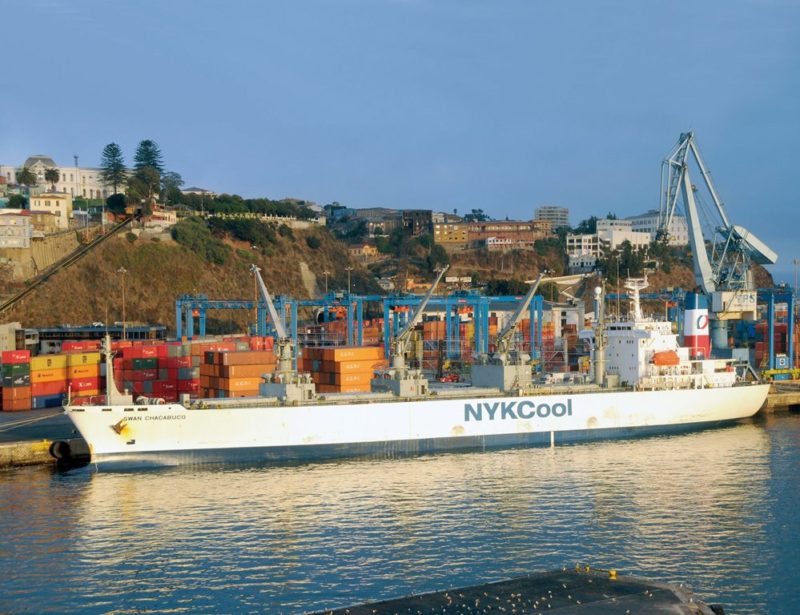
Empresa Portuaria Valparaiso (EPV) or the Valparaiso Port Company (VPC) is the manager of this busy port in Central Chile, lying 70 miles north west of Santiago de Chile, the capital. The port dates from 1810 when the town consisted of two villages, the Almendral and the Port, separated by the Cape on the seaward side. A wealthy merchant then built the Villarrutia dock at the front of the port where today the Head Office of the newspaper El Mercurio de Valparaiso (Valparaiso Mercury) is located. The first berths of any size were built in the 1820s and 1830s together with the first warehouses for the trade to Europe. The Pacific Steam Navigation Company (PSNC) of Liverpool took the premier place in the trade to the West Coast of South America when it was granted a Royal Charter in 1840, using small paddle steamers. The opening of the Panama Canal in 1914, allowed passenger and cargo services to the U.K. from Valparaiso to be greatly increased along the 3,100 kilometres of the Chilean coastline.
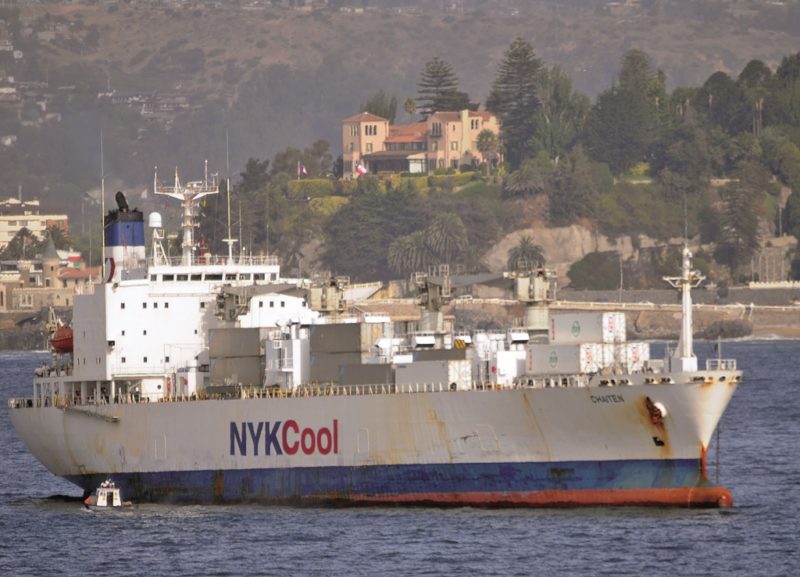
VALLEY OF PARADISE
Valparaiso or ‘The Valley of Paradise’ is the gateway to the fertile heartland of Chile, as well as to the capital Santiago de Chile and the Andes mountains. These high mountains restrict Chile for the vast part of its length to a narrow strip of coastal land around 150 miles wide. The seafarer or the cruise passenger approaching the port by sea has to absorb the vista of high mountains all around the port. Downtown Valparaiso has old, narrow cobbled streets with museums, plazas and the huge dome of the National Congress Building. A series of very steep hills form a long crescent of high ground all around the port, with a multitude of many colourful houses, where one can paint their walls with a paint spray can if permission is granted by the houseowner. This multitude of street art gives life to this very hilly assortment and maze of escaleras (steps), ascensors (lifts), cable cars and funicular railways that lead to blind alleys, where visitors often end up completely lost.
During the Golden Age of Valparaiso (1848-1914), the city received large numbers of immigrants primarily from Europe. The immigrant communities became separate districts for Spanish, French, Italian, British and German nationals up the steep hillsides, founding their own noteworthy cultural and economic institutions, preserved today as ‘Zonas Tipicas’ or National Historic Districts. A total of 28 ‘ascensors’ or lifts were built at Valparaiso for citizens to reach their homes on the lofty heights of the city, of which a dozen were still in operation in 2010. They had the names of the Artilleria Funicular Railway built up Artillery Hill, and the Ascensor Conception (built in 1883 operated by steam and still in service), Ascensor Polanco (the only vertical lift), Ascensor Cerro Cordillera (built in 1887), Ascensors Baron, El Peral, Reina Victoria (Queen Victoria), St. Augustine, Florida, Butterflies, Nuns, Larrain, Villaseca and Mountain, as well as others that have not been preserved. The Escalera Piano of gently sloping steps have some aficionados among the older and less agile members of the community.
The original native South American Chango nomads existed by fishing in the Bay of Valparaiso. The Spanish conquistadores arrived in 1536 aboard their galleon Santiaguillo, commanded by Juan de Saavedra, and supported the Spanish expedition of exploration around the Bay of Valparaiso of Don Diego de Almagro. They named the village and the bay after their native village of Valparaiso de Arriba in Cuenca Province in Central Spain. During Spanish colonial times, Valparaiso remained as a small fishing village with only a few small houses and a Church, the Iglesia de la Matriz del Salvador founded in 1559 by the Bishop of Santiago. Francis Drake raided the village in 1578, taking loot including gold treasures and a chalice of solid silver from the Church, which is now a National Historic Monument of Chile. The Battle of Valparaiso was fought in 1814 between American and British frigates during the Anglo – American War of 1812 and its aftermath. Chile became independent from Spain in 1818 using the growing power of the Chilean Navy. Many beautiful plazas or squares were then built in Valparaiso including Plaza O’Higgins named after a great Chilean naval hero, Plaza Bismarck, Plaza Victoria, Plaza Yugoslaye and Plaza Soto Mayor, the latter square is lined with statues and fine official buildings including the Chilean Navy headquarters.
The Palacio Baburizza is the former residence of Croatian businessman Pascual Baburizza, who built this grand house in 1916 using Italian architects and craftsmen to design the many turrets and gable ends, and which eventually became a museum in 1971 and was declared a National Historic Monument in 1976 and is open to visitors. La Sebastiana is a very high four storey hilltop house built above the port and city by Pablo Neruda, the great Chilean poet, with his writing desk and personal effects still preserved today in the Casa Museo Sebastiana and open to visitors.

The old world atmosphere of Valparaiso and beautiful colours of the ‘Nacional Bellas Artes’ or National Fine Arts buildings are due to the original European inhabitants wanting to bring a touch of European elegance to their new home in Chile. The maze of cobbled streets and Neo – Classical buildings with unique architecture are reminiscent of the opulent Golden Ages of Spain, Southern Europe and the Mediterranean rather than the South West Pacific coastline. Valparaiso is best explored on foot, and the ‘ascensors’ and ‘escaleras’ were built for that purpose, as these romantic lifts and funicular railways climb the notoriously steep hillsides of Valparaiso. Empresa Portuaria Valparaiso (EPV), the port company, is surrounded by the Altamirano road on its landward side from where a great view can be obtained from the highpoint of 21 de Mayo (21st May) using the Ascensor Artilleria to reach it.
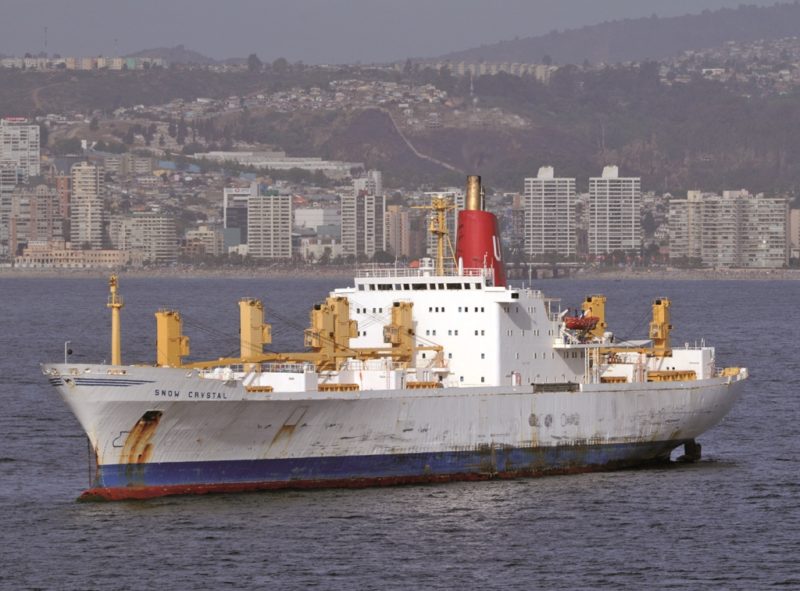
Unfortunately, Valparaiso has suffered great damage in the past from several earthquakes with tectonic plates colliding and sliding deep under the foothills of the Andes mountains, the first on 18th August 1906 on a 8.2 magnitude on the Richter Scale, and others on 22nd May 1960 with a magnitude of 9.6 causing 5,700 deaths in the Valdivia area, another on 3rd March 1985 causing 177 deaths and major disruption to the Port of Valparaiso, another on 27th February 2010 with a magnitude of 8.8, another on 25th March 2012 with a magnitude of 7.1, and another on 24th April 2017 with a magnitude of 6.9 and around one thousand aftershocks, and the latest on 1st August 2019 with a magnitude of 6.8.
The central part of the city of Valparaiso was declared an UNESCO World Heritage Site in 2003, with the Conception and Cerros Alegre areas preserving the architectural and social highlights of former European families. The Anglican Church of Saint Paul, the Paseo de Catorce Asientos (Street with fourteen seats), the Paseo Pierre Loty, the Lutheran Church and the Plaza Echaurren, and the historic Castillo San Jose, which is home to the Lord Cochrane Museum of the Sea, are all worth visiting by the tourist.
The beach resort of Vina del Mar is called the ‘Garden City of Chile’ because of its abundance of green spaces and flower beds. This resort is only six miles up the bay from Valparaiso with grand mansions and carefully landscaped gardens with palm trees lining the streets, together with a large working clock covered with and made from flowers. Vina del Mar is home to the National Botanic Garden of Chile with rare specimens of plants from all over the world, and the world renowned Festival Internacional de la Cancion (International Song Festival) held here every February after the first such festival was held in February 1960.
The Fiesta Pirotechnico (Fireworks Festival) is celebrated during the last three days of the year in Valparaiso, with the roads and railways busy bringing in many citizens from Santiago as well as from all over Latin America to watch a 30 minute fireworks display on the eve of the New Year, as well as other celebrations and attractions during the three days of festival. The city of Valparaiso has a population of 284,630 with 930,220 residents living in the Greater Valparaiso Metropolitan area, with fruit growing, textiles, sugar refining, and paint, shoe and chemical factories as the principal industries.
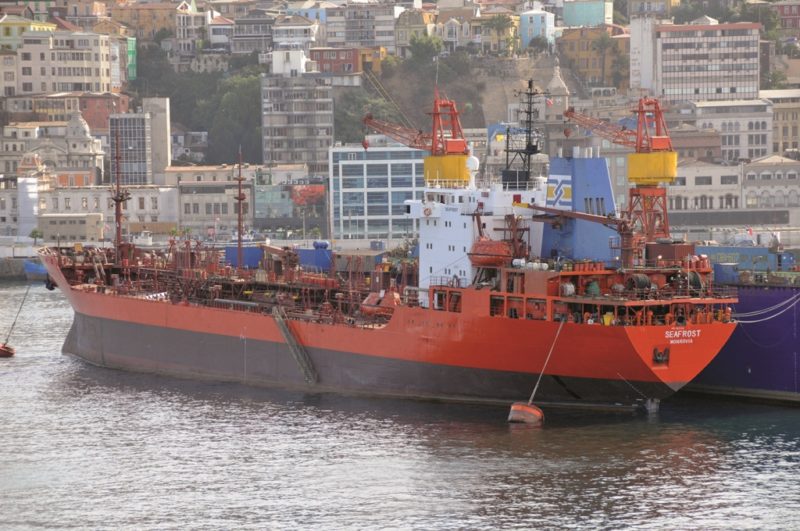

Subscribe today to read the full article!
Simply click below to subscribe and not only read the full article instantly, but gain unparalleled access to the specialist magazine for shipping enthusiasts.
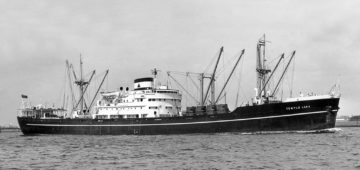




Comments
Sorry, comments are closed for this item